Abstract
In a concurrent prospective study, medical and surgical residents rated the severity of illness and difficulty of clinical management of each of their patients within 24 hours of admission, and on a daily basis throughout the patient's stay. Data were collected on consecutive admissions resulting in 661 admissions with complete data for analysis. Results indicate that difficulty and severity are correlated, each explaining variations in length of stay (LOS), and together explaining up to 44 percent. Four alternative measures are tested, first-day values, average values over the stay, peak or highest values, and a zero-one measure indicating whether or not the severity or difficulty fluctuated over the stay. First-day and average measures of severity and difficulty explain little variation in LOS; peak and fluctuating measures are highly explanatory. After adjusting for diagnosis-related groups (DRGs), fluctuating severity adds 34 percent, and adjusting for both DRGs and severity, fluctuating difficulty adds 10 percent for a total of 53 percent variance explained. In comparable results, peak severity adds 21 percent, and peak difficulty 4 percent, for a total of 34 percent variance explained. Findings indicate that difficulty had independent value as a predictor, and the high explanatory power of the fluctuating measures suggests that a third dimension, instability, may be as important as severity and difficulty in explaining LOS.
Full text
PDF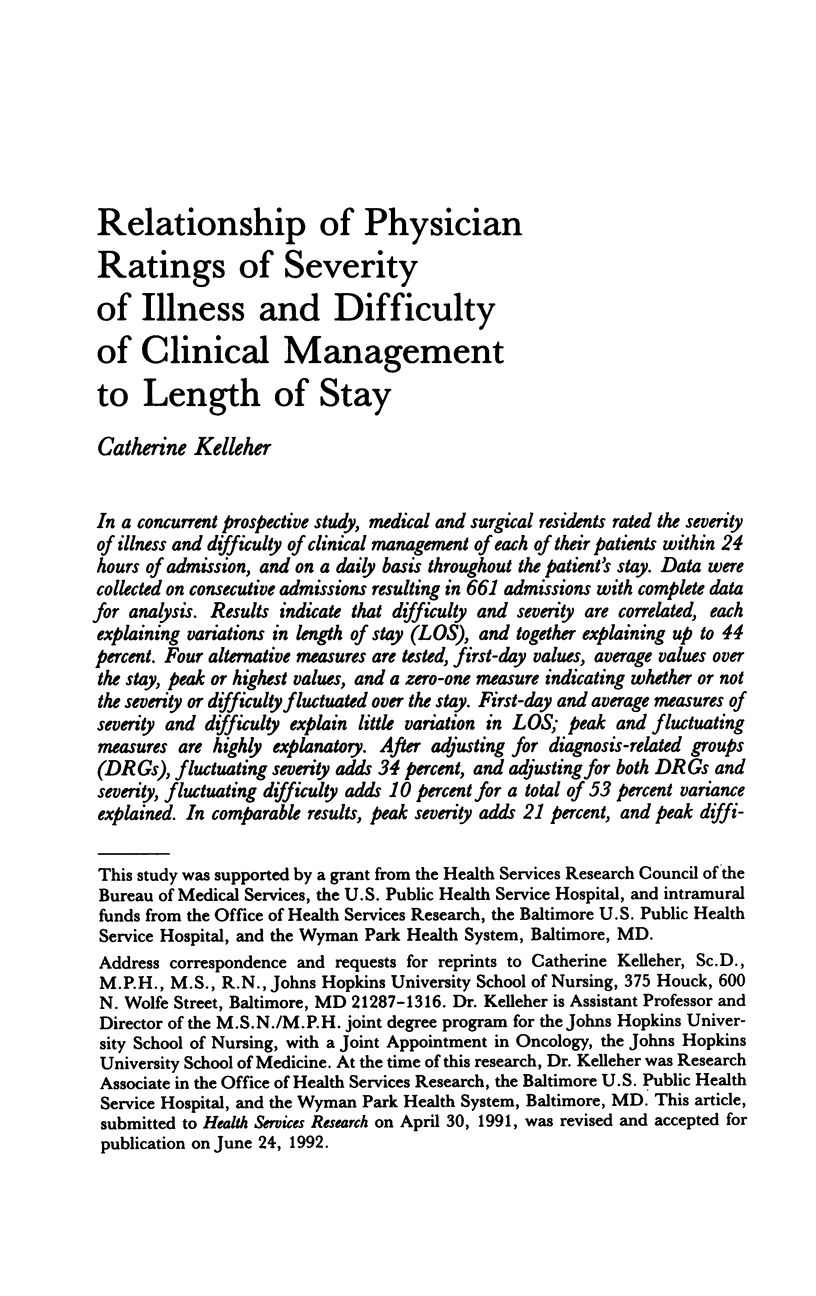
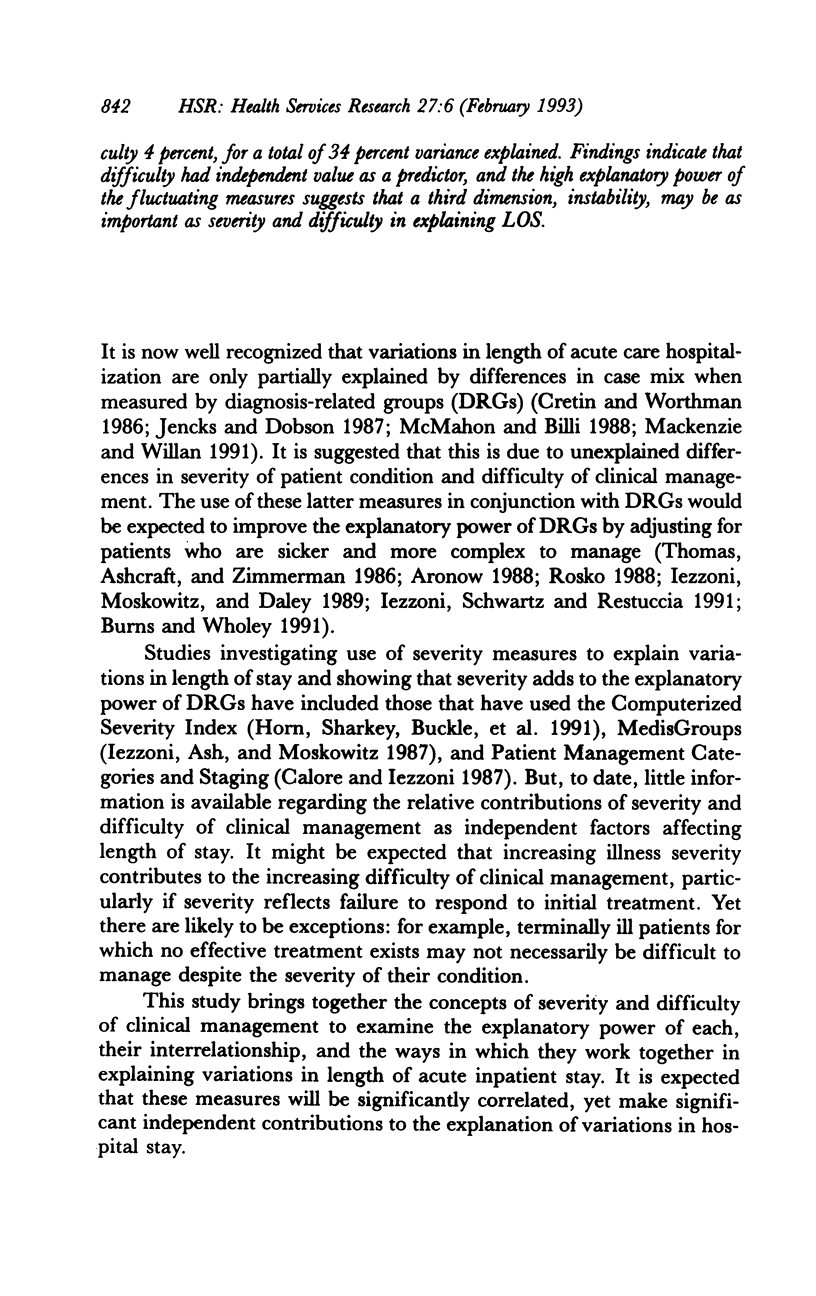
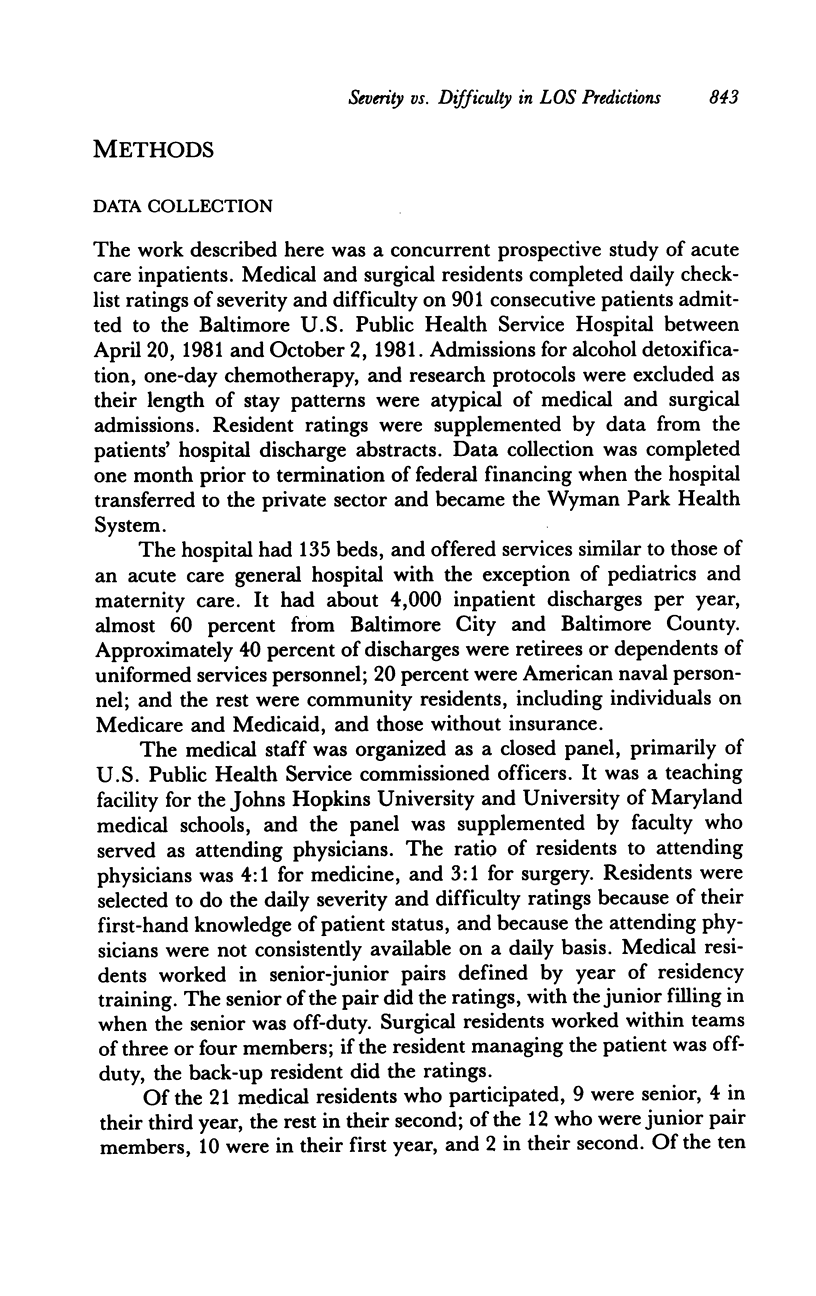
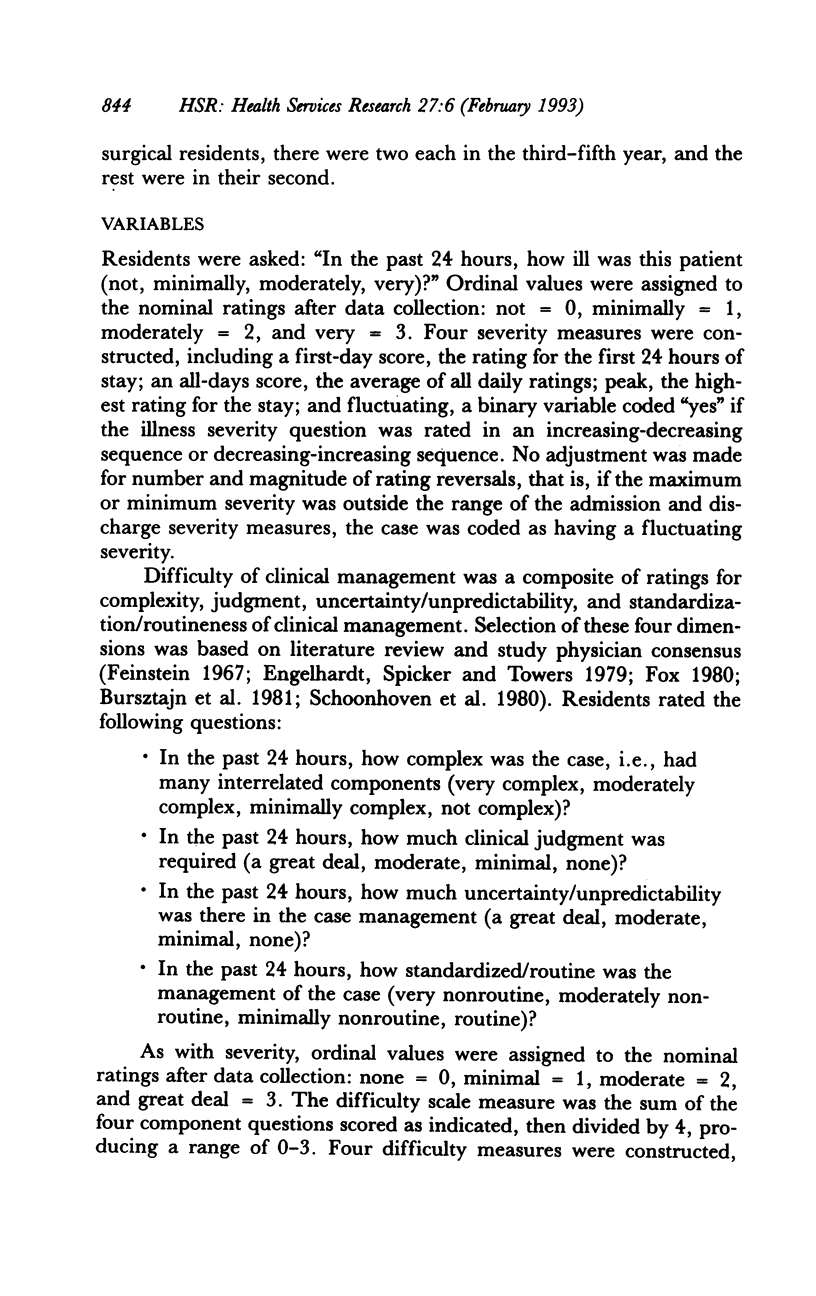
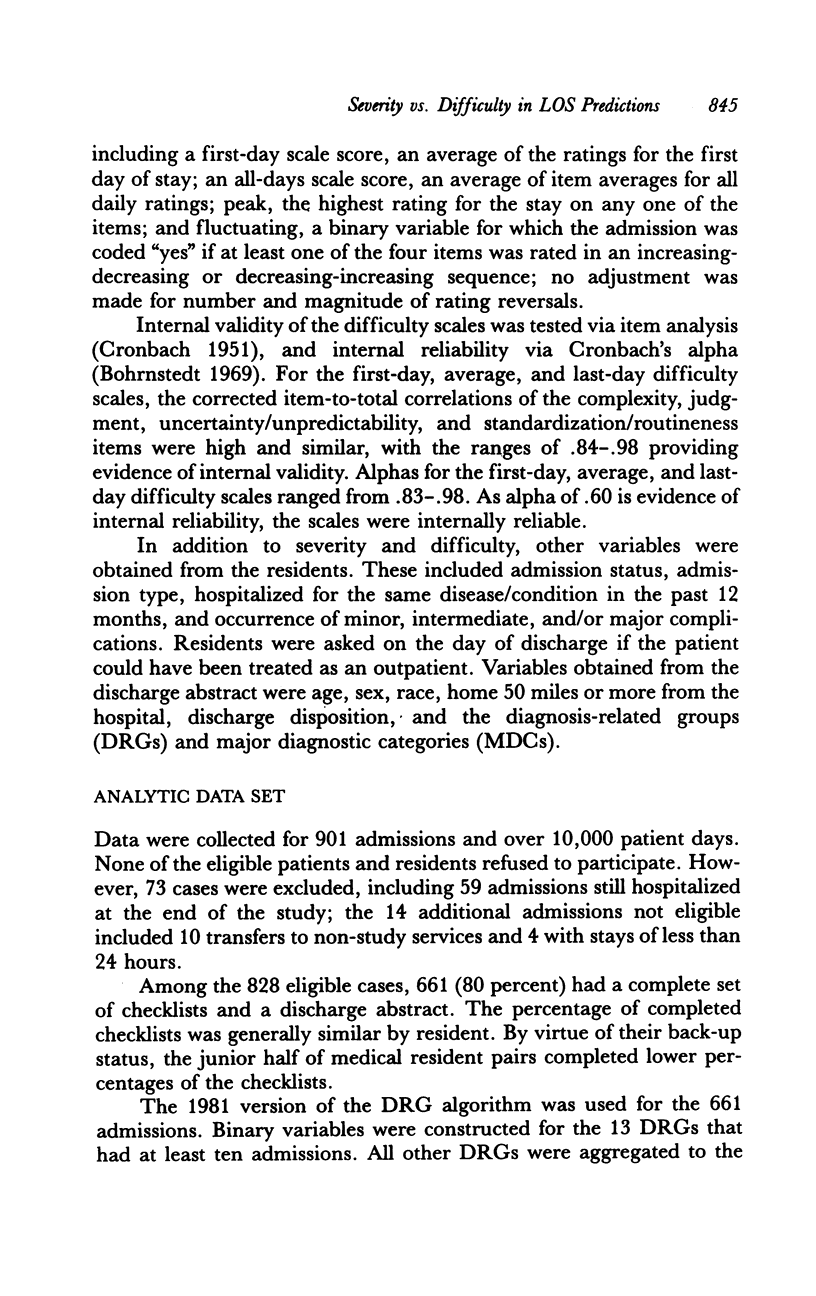
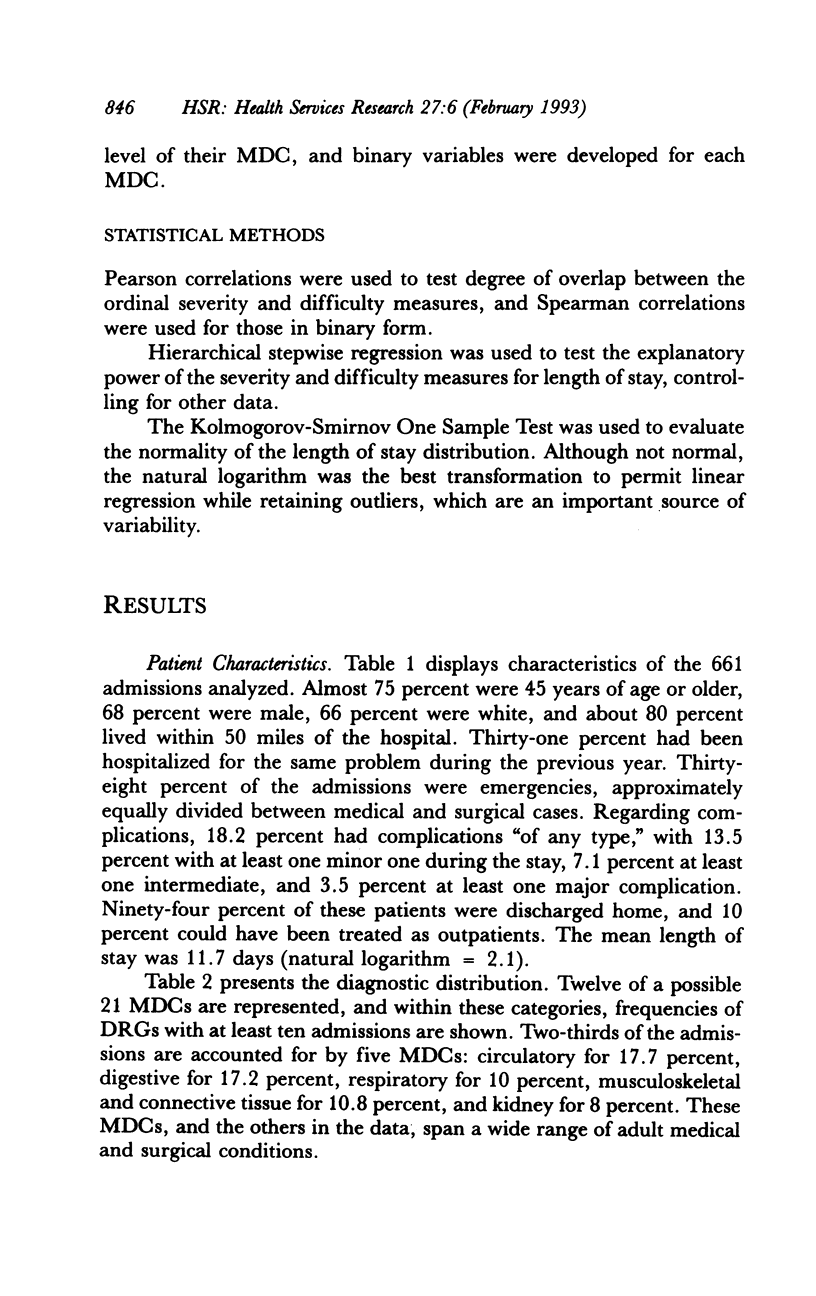
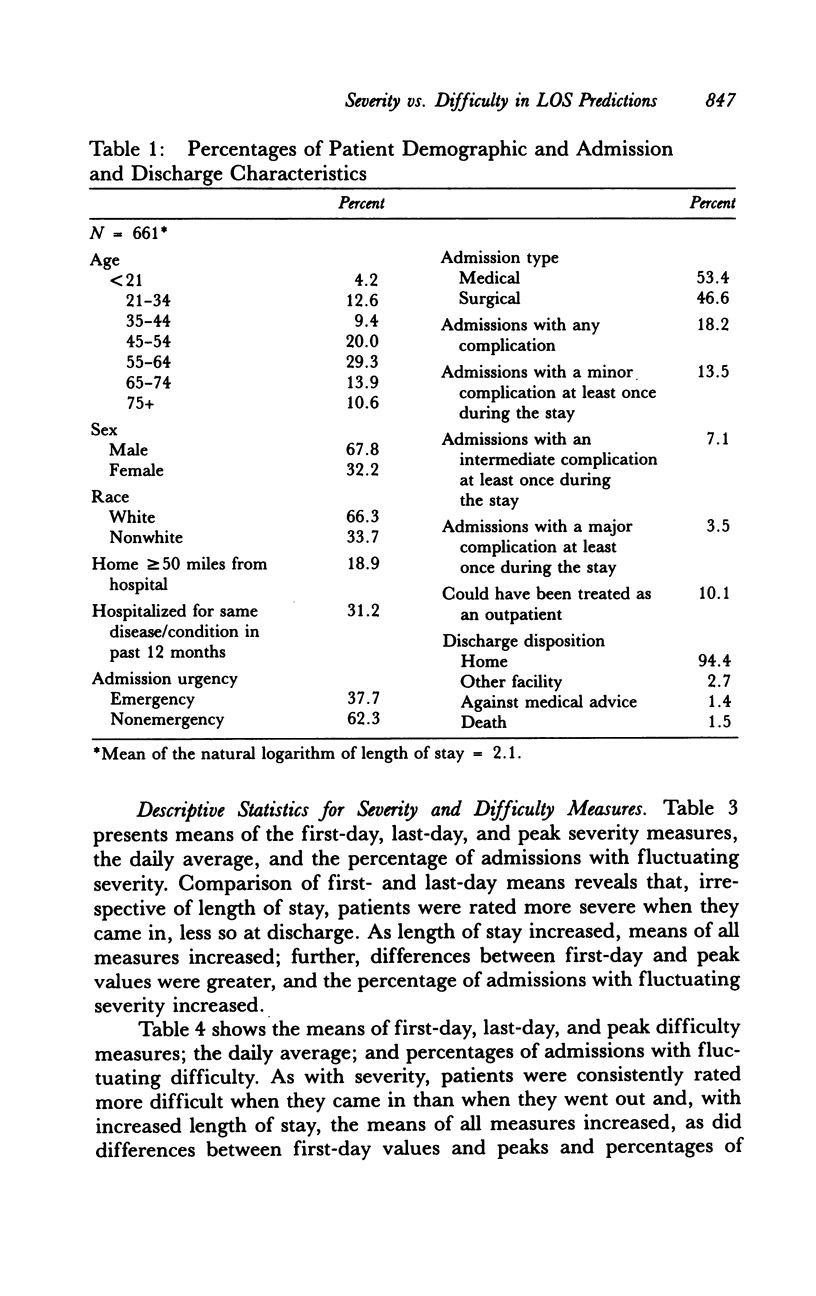
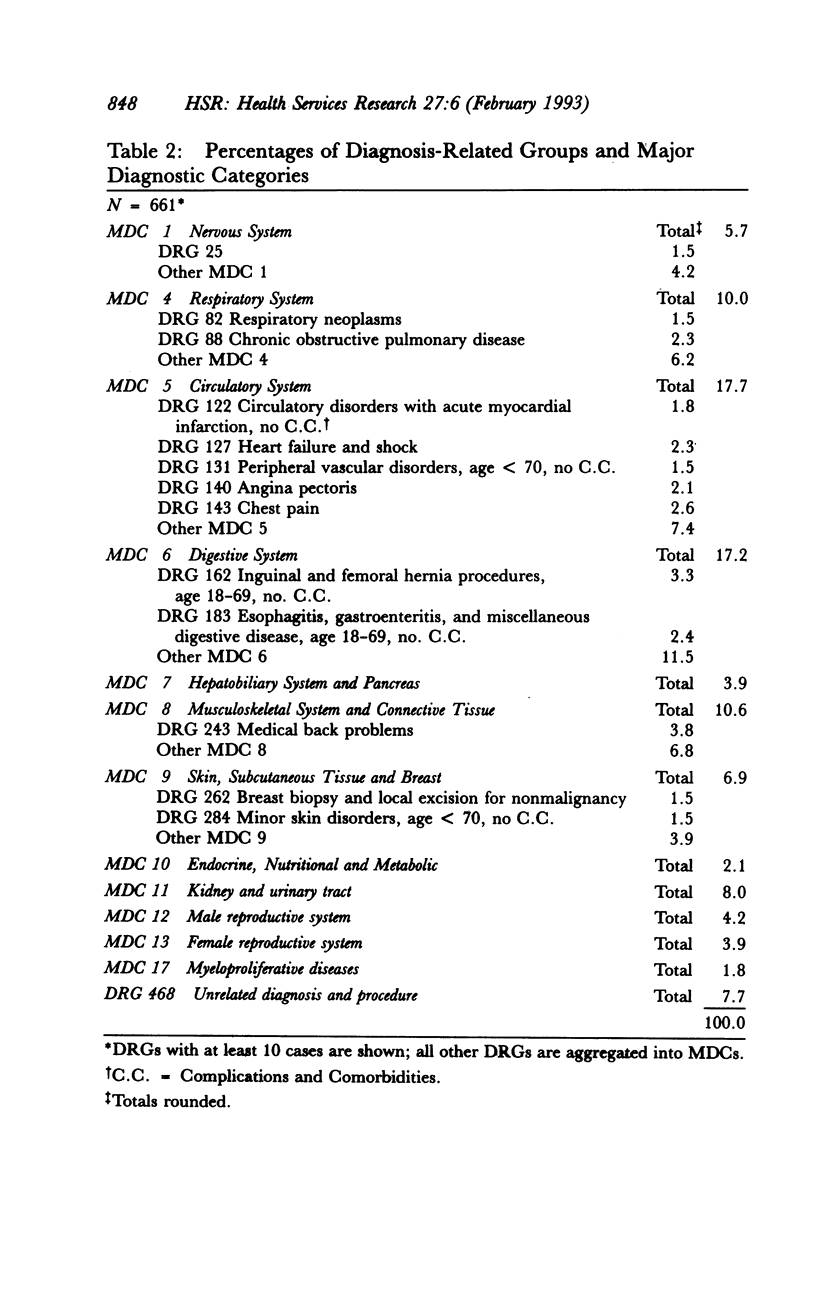
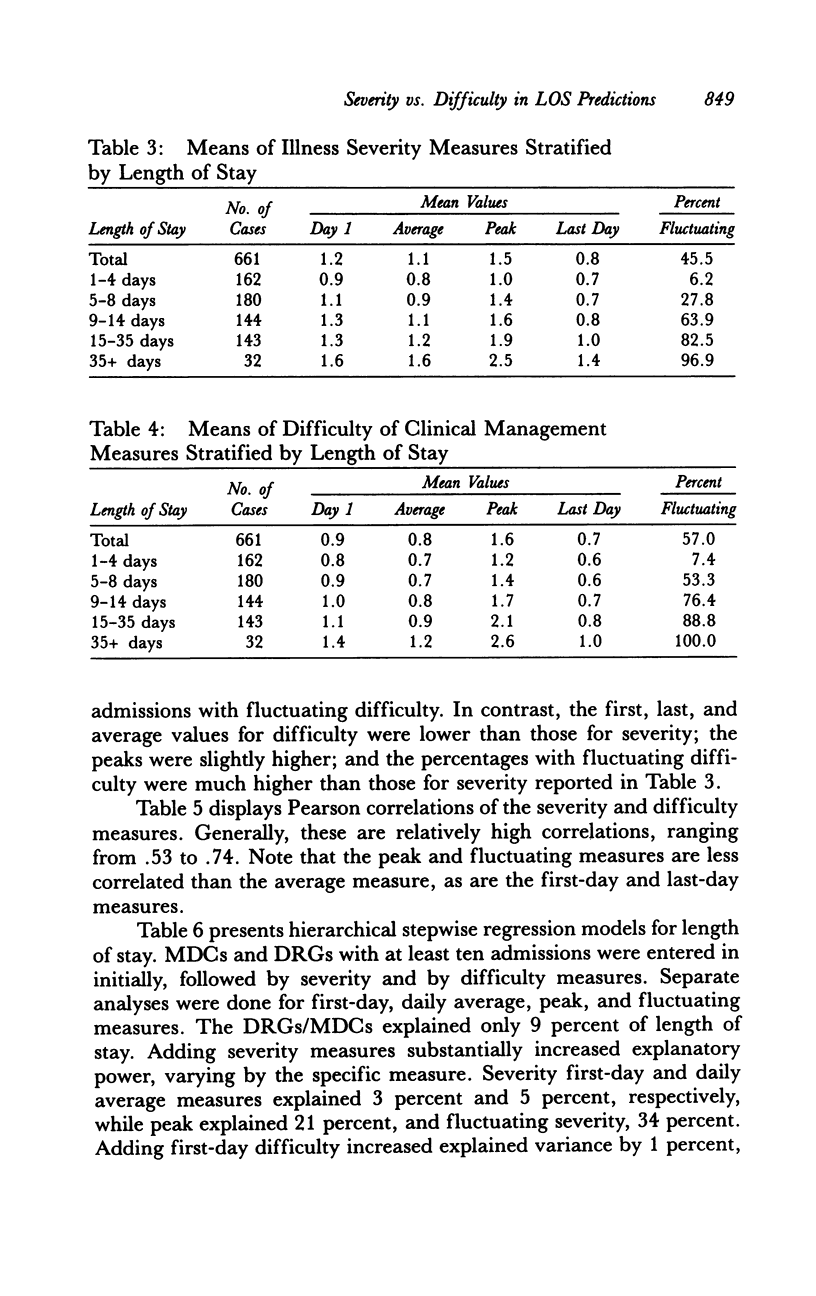
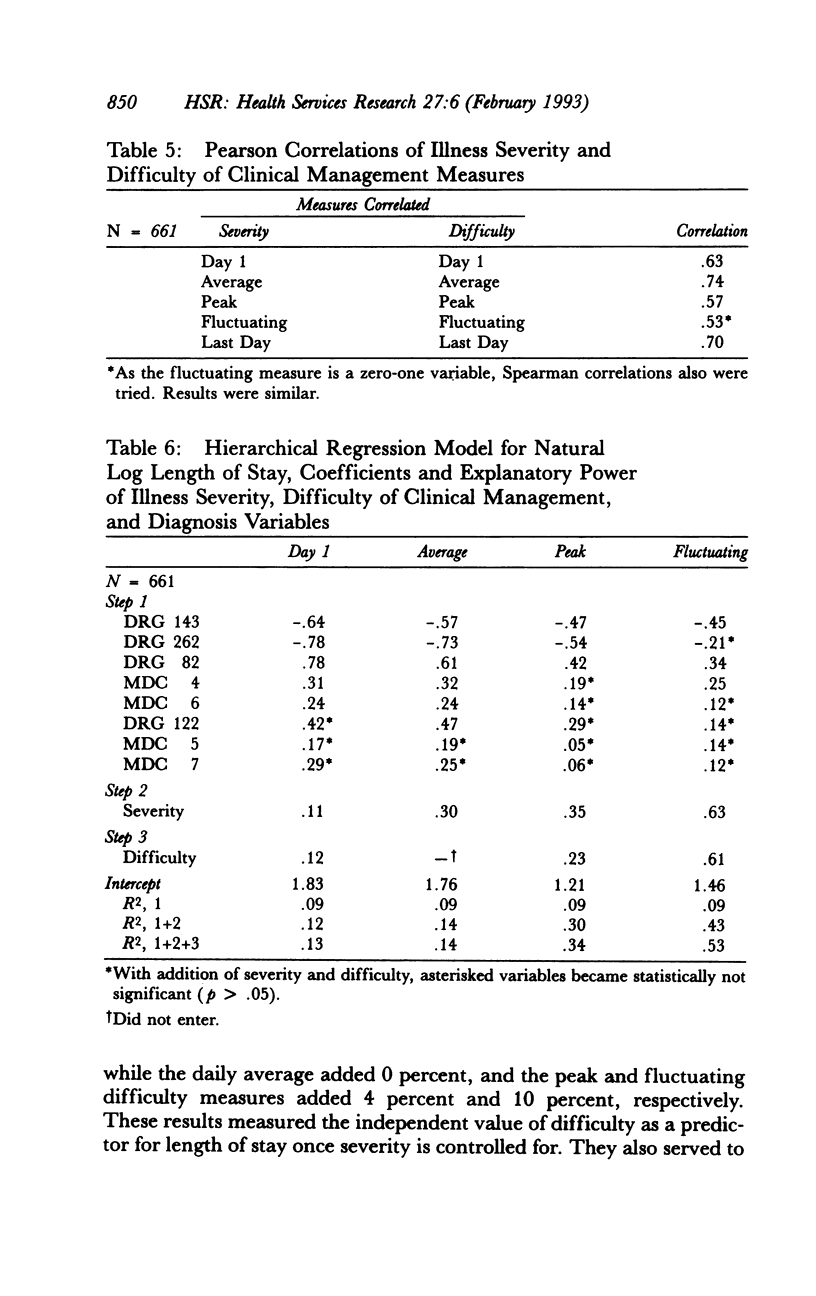
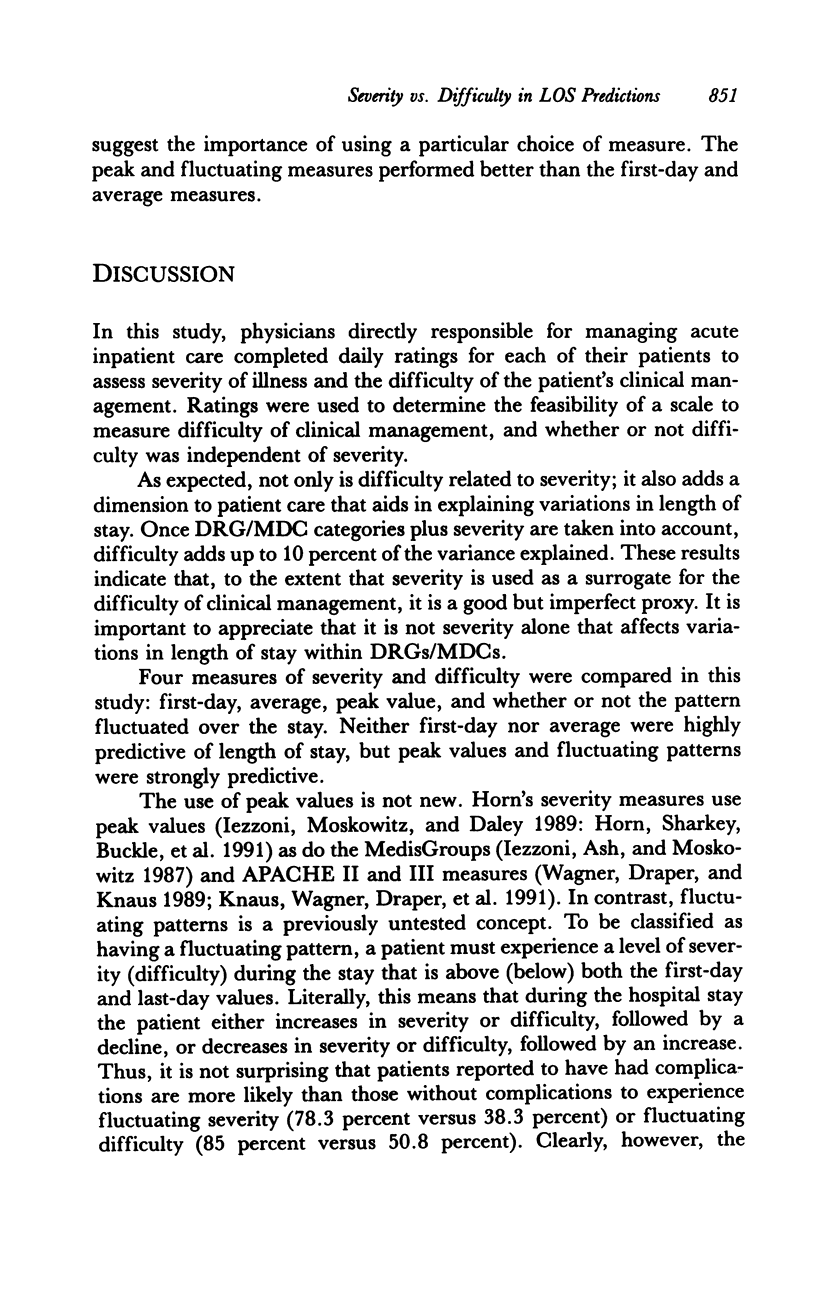
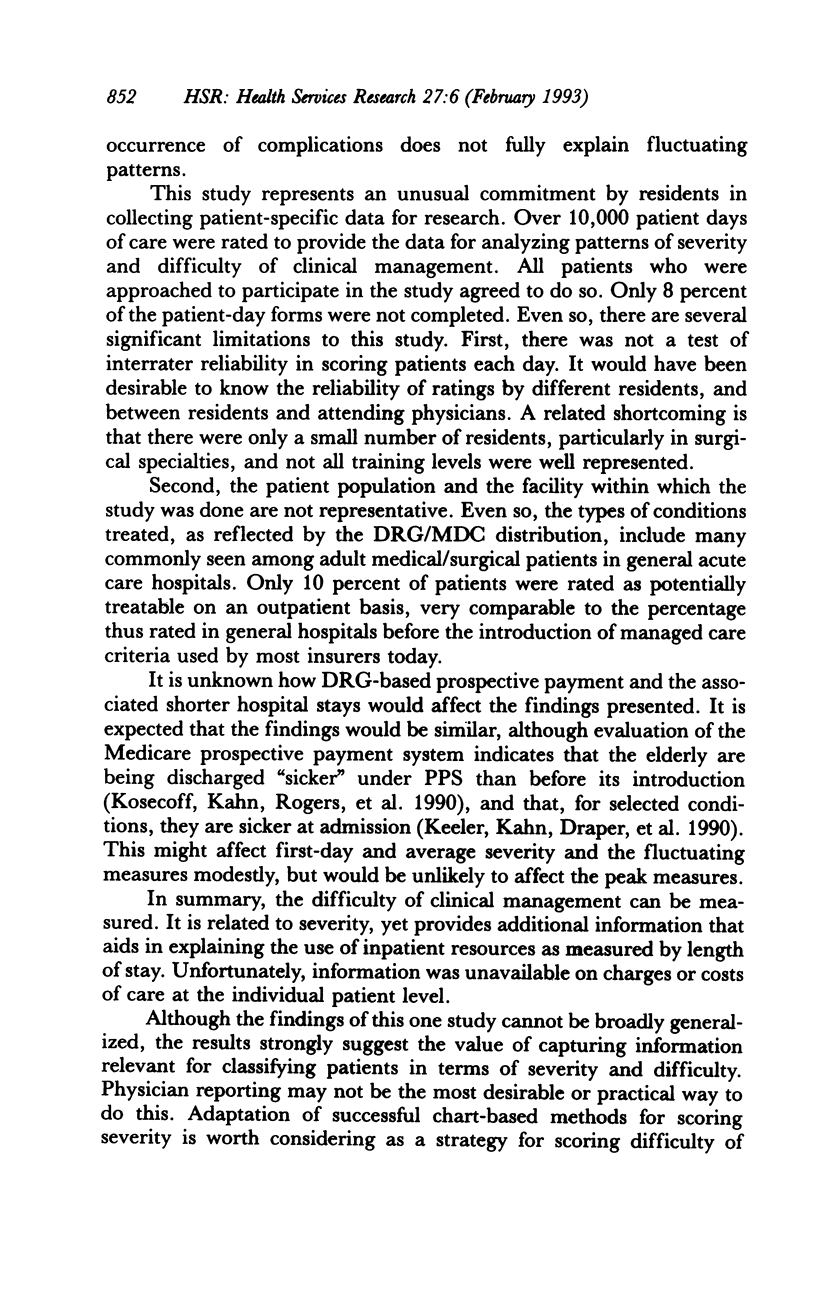
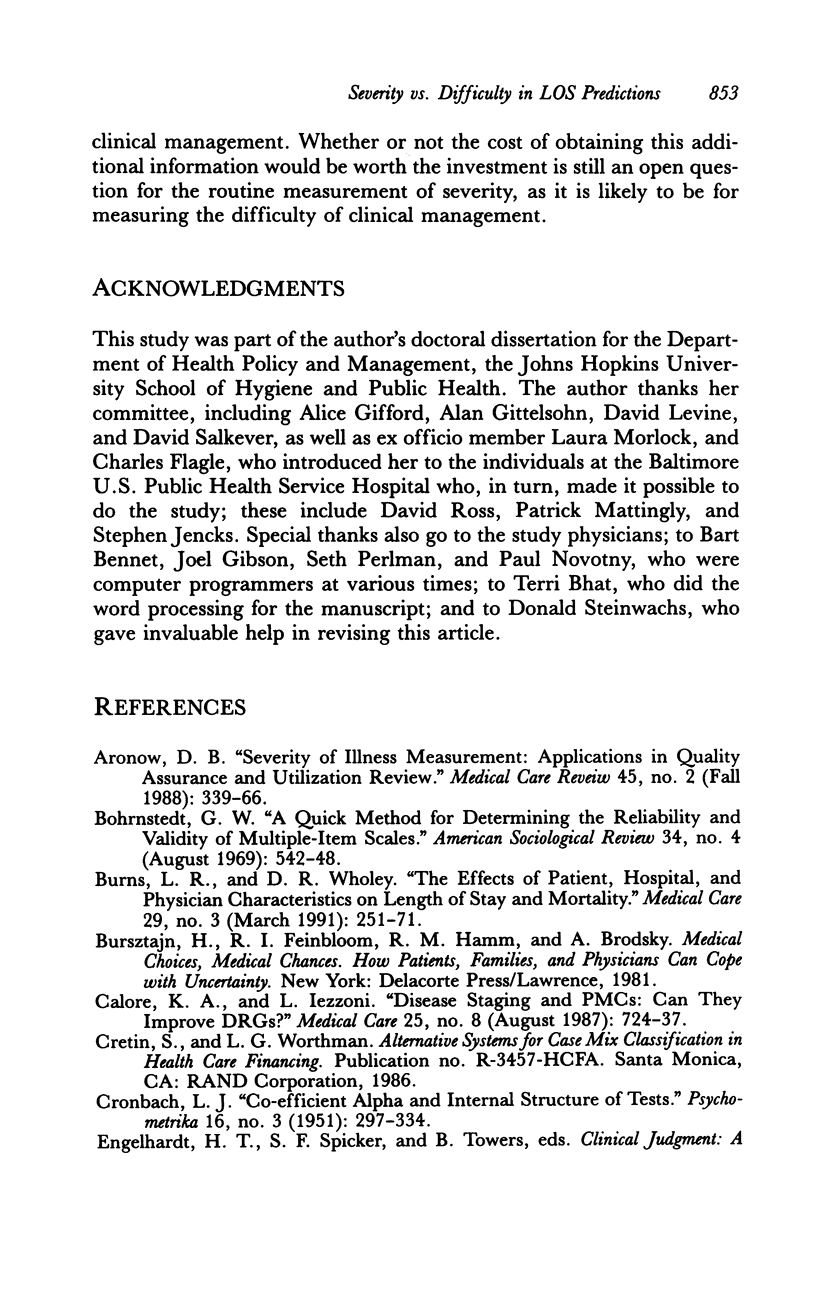
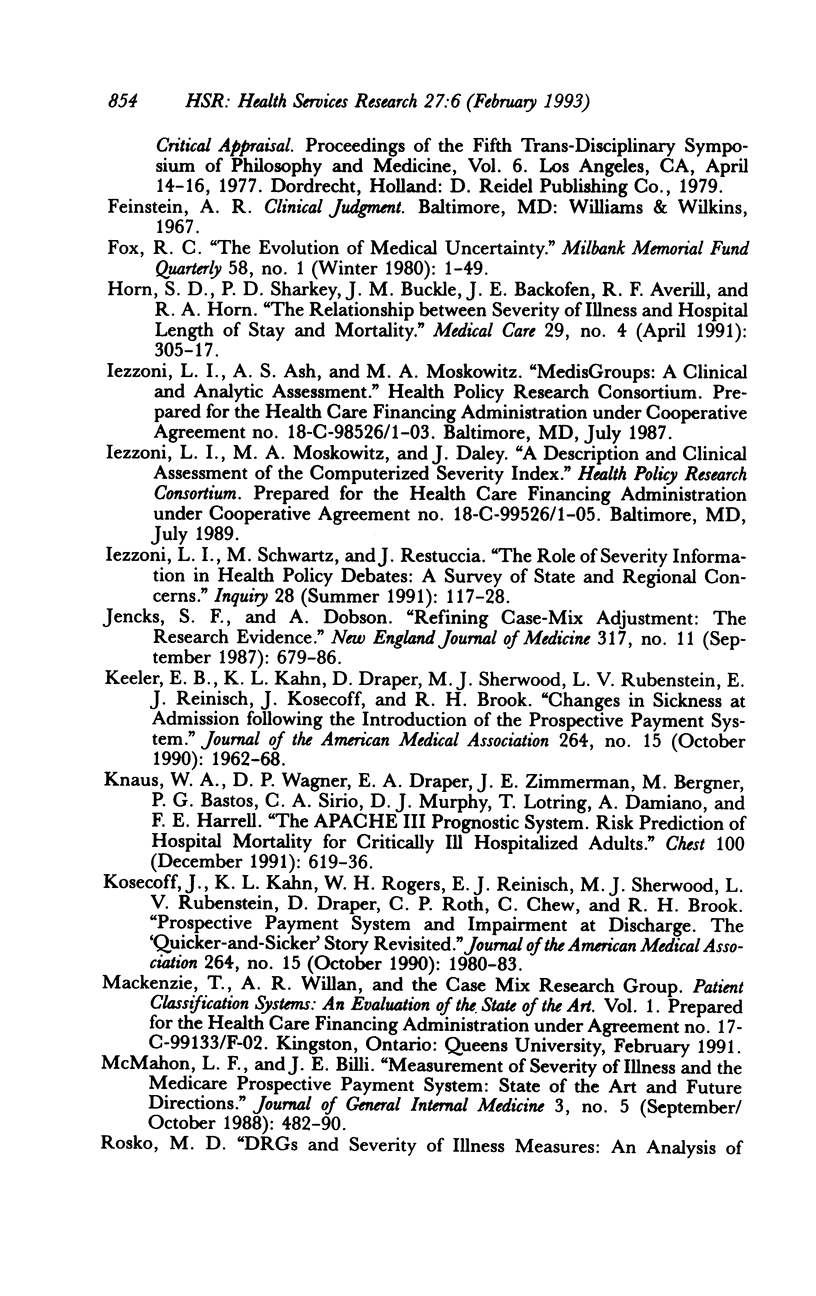
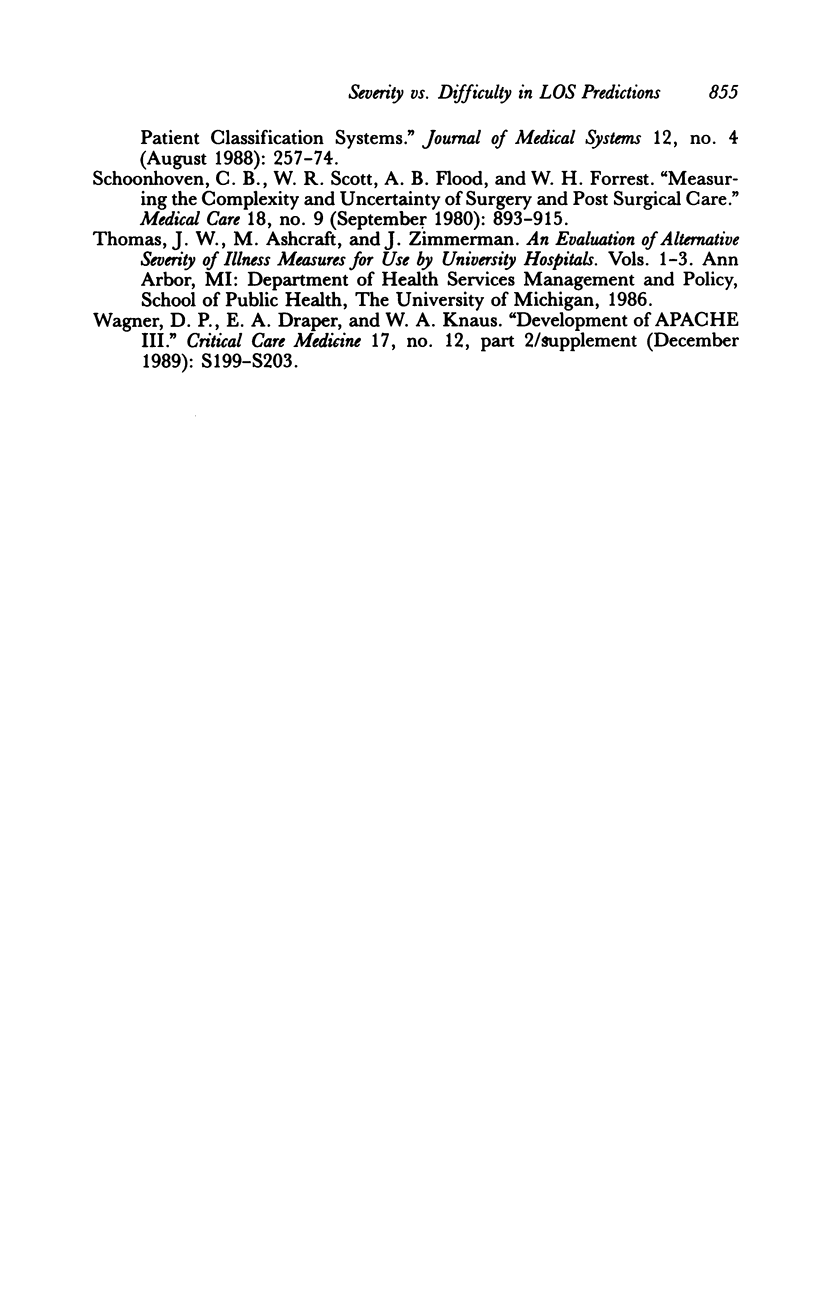
Selected References
These references are in PubMed. This may not be the complete list of references from this article.
- Aronow D. B. Severity-of-illness measurement: applications in quality assurance and utilization review. Med Care Rev. 1988 Fall;45(2):339–366. doi: 10.1177/107755878804500206. [DOI] [PubMed] [Google Scholar]
- Burns L. R., Wholey D. R. The effects of patient, hospital, and physician characteristics on length of stay and mortality. Med Care. 1991 Mar;29(3):251–271. doi: 10.1097/00005650-199103000-00007. [DOI] [PubMed] [Google Scholar]
- Calore K. A., Iezzoni L. Disease staging and PMCs. Can they improve DRGs? Med Care. 1987 Aug;25(8):724–737. doi: 10.1097/00005650-198708000-00006. [DOI] [PubMed] [Google Scholar]
- Fox R. C. The evolution of medical uncertainty. Milbank Mem Fund Q Health Soc. 1980 Winter;58(1):1–49. [PubMed] [Google Scholar]
- Horn S. D., Sharkey P. D., Buckle J. M., Backofen J. E., Averill R. F., Horn R. A. The relationship between severity of illness and hospital length of stay and mortality. Med Care. 1991 Apr;29(4):305–317. doi: 10.1097/00005650-199104000-00001. [DOI] [PubMed] [Google Scholar]
- Iezzoni L. I., Shwartz M., Restuccia J. The role of severity information in health policy debates: a survey of state and regional concerns. Inquiry. 1991 Summer;28(2):117–128. [PubMed] [Google Scholar]
- Jencks S. F., Dobson A. Refining case-mix adjustment. The research evidence. N Engl J Med. 1987 Sep 10;317(11):679–686. doi: 10.1056/NEJM198709103171106. [DOI] [PubMed] [Google Scholar]
- Keeler E. B., Kahn K. L., Draper D., Sherwood M. J., Rubenstein L. V., Reinisch E. J., Kosecoff J., Brook R. H. Changes in sickness at admission following the introduction of the prospective payment system. JAMA. 1990 Oct 17;264(15):1962–1968. [PubMed] [Google Scholar]
- Kosecoff J., Kahn K. L., Rogers W. H., Reinisch E. J., Sherwood M. J., Rubenstein L. V., Draper D., Roth C. P., Chew C., Brook R. H. Prospective payment system and impairment at discharge. The 'quicker-and-sicker' story revisited. JAMA. 1990 Oct 17;264(15):1980–1983. [PubMed] [Google Scholar]
- McMahon L. F., Jr, Billi J. E. Measurement of severity of illness and the Medicare prospective payment system: state of the art and future directions. J Gen Intern Med. 1988 Sep-Oct;3(5):482–490. doi: 10.1007/BF02595926. [DOI] [PubMed] [Google Scholar]
- Rosko M. D. DRGs and severity of illness measures: an analysis of patient classification systems. J Med Syst. 1988 Aug;12(4):257–274. doi: 10.1007/BF00999504. [DOI] [PubMed] [Google Scholar]
- Schoonhoven C. B., Scott W. R., Flood A. B., Forrest W. H., Jr Measuring the complexity and uncertainty of surgery and postsurgical care. Med Care. 1980 Sep;18(9):893–915. doi: 10.1097/00005650-198009000-00003. [DOI] [PubMed] [Google Scholar]
- Wagner D., Draper E., Knaus W. APACHE III study design: analytic plan for evaluation of severity and outcome in intensive care unit patients. Development of APACHE III. Crit Care Med. 1989 Dec;17(12 Pt 2):S199–S203. [PubMed] [Google Scholar]


